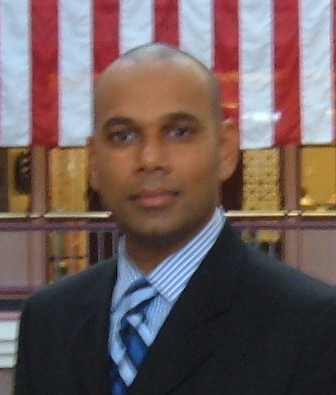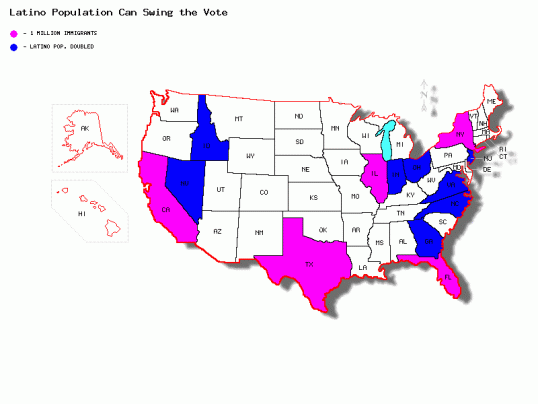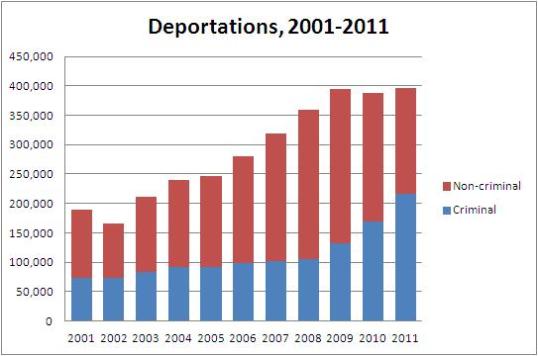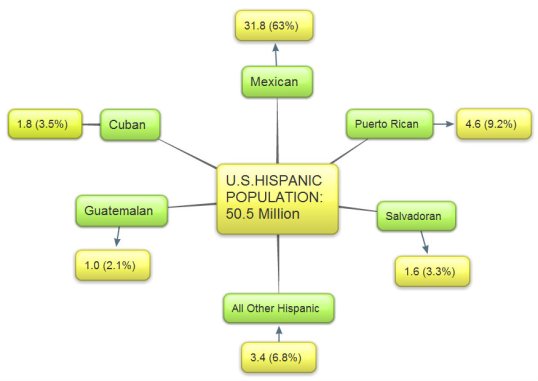The “Browning of America”: Will Latinos Truly Influence the 2012 Elections?

Dr. Stephan Balkaran, Professor of African-American Studies and Coordinator of the Civil Rights Project at Central Connecticut State University
The Browning of America: Will Latinos Truly Influence the 2012 Elections?
By Sylvia Mendoza
It is election year and even though the focus may be on presidential candidates, there is another major force to be reckoned with—the Latino presence in the United States. With more than 51 million Hispanics living in the country, the potential voting power can easily tilt the scales for any candidate.
Yet, instead of seeing the positive influence a huge Latino turnout at the polls can be, candidates are cautious when addressing the Hispanic community. Emphasis has shifted to the controversial issues of immigration reform, variations of the Dream Act and the swell of racial tension that affects American-born Latinos as well as undocumented immigrants. Stereotypes of the Latino community have been perpetuated, inciting racism, racial profiling, hate crimes, discrimination and civil and human rights violations.
At the American Association of Hispanics In Higher Education (AAHHE) Conference held in Costa Mesa, California, in March, Dr. Stephan Balkaran, a professor of African-American Studies and coordinator of the Civil Rights Project at Central Connecticut University, presented the workshop: “Can the Hispanic Vote Change the Outcome of the 2012 Election? “No other immigrant group in the history of the United States has the opportunity to redefine America—politically, economically, and socially—like the Hispanic community today.”
According to the Pew Hispanic Center, there are more than 51 million Hispanics living in the United States. Approximately 11 million are undocumented. In Georgia, Illinois, Idaho and New Jersey, the Hispanic population has grown by more than 180% since the 2000 census. Under the Hispanic “umbrella,” there are many ethnicities. Immigrants from Mexico are the highest population in the U.S. at 39%, followed by Puerto Rican, Cuban and Guatemalan.
Balkaran has termed this presence as the “browning of America.” In mainstream white America, he said, the image of Latinos is mostly negative and that image has to change. “Whether you’re fourth generation or a recent immigrant, you are always marginalized by the color of your skin,” he said. “It isn’t about the economic strain of Latinos in this country or the language barrier. It’s that this country isn’t ready for brown.”

PINK: California, Texas, Illinois, Florida and New York each have more than 1 million immigrants.
BLUE: In Georgia, Idaho, Indiana, Nevada, New Jersey, North Carolina, Ohio and Virginia, the Latino population has doubled--or increased up to 180%--since the 2000 U.S. Census.
An immigrant from Trinidad, Balkaran arrived in the U.S. at age 18 and started working at the United Nations and World Bank internships. As he studied, however, he witnessed disturbing trends at the university level. “When I became a professor, I started to see how the institutions treated black and brown professors. They were passed over for promotions, research was undermined.”
The author of “The Photobiography of the Civil Rights Movement” and “Broken Dreams, Broken Promises, Disparities and Disappointments: Civil Rights in the 21st Century,” Balkaran was determined to teach about the effects of race and culture. “We have to overcome fears based on race and embrace social change and diversity.”
That positive social change can occur if Latinos vote, said Balkaran. Voto Latino, a grassroots organization, has been building a movement to get Hispanics registered to vote and estimate that 12 million will do so this year. “The Hispanic vote cannot be taken for granted,” said Balkaran. “We’ll be the major vote in the next 20 years.”
Politicians have honed in on that vote, but seem reluctant to address hot topic buttons like immigration reform and the Dream Act. “Immigration reform has become the Civil Rights movement of the 21st century,” said Balkaran.
Even so, only presidential candidate Newt Gingrich has put a plan on the table. “He says that if immigrants been here 20 years, have gone to church, have learned English and have no criminal acts, let them be citizens,” explained Balkaran.
Obama, on the other hand, has lost the confidence of the Latino community because of his failure to address the issue, said Balkaran. “He’s fixed Wall Street and Main Street but not Brown or Black Streets. He broke up more families in his first term of presidency than two terms combined with President Bush. He has reneged on the greatest asset of this country. America’s greatest betrayal is on Hispanics.”
During President Obama’s term in office, the number of deportations has hit record highs, yet no immigration reform policy has been instituted. Since 2007 nearly 1 million immigrants have been deported. In 2011 alone, there were nearly 400,000 deportations to Mexico. The U.S. Immigration and Customs Enforcement (ICE) is focusing on deporting those with a criminal record, but only 35% of those deported had committed serious crimes.

Deportations From 2001-2010. U.S. Immigration and Customs Enforcement (ICE). From http://www.AmericasVoiceOnline.org
Immigration reform has been addressed in prior years, but currently affects mostly the Mexican population because the Wet-foot, Dry-Foot policy protects Cuban immigrants and other policies are in place for immigrants from Nicaragua, Guatemala, Columbia and Haiti. The Immigration Reform and Control Act (IRCA) of 1986 held employers accountable and they faced fines for employing undocumented workers. It also gave amnesty to those who had been in the country since before 1982. In 2001, President George W. Bush and Mexico’s President Vicente Fox had agreed on an immigration reform policy that both countries could live with, which included border security, drug trafficking control and legalization solutions for those already living in the U.S. Before it could be implemented, however, the terrorist attacks on September 11, brought discussions to a halt.
Despite President Obama’s failure to establish an immigration reform policy, which was a high priority in his last campaign, and current deportation statistics, a Fox News Latino poll showed that Hispanics are still more likely to vote for Obama again unless a Republican brings in a Latino on his/her ticket.
Another issue that can affect the way Latinos vote is the Dream Act. Variations of the Dream Act have been passed—or not—on a state by state basis. Tom Curry, national affairs writer for msnbc.com explained that the Dream Act offers a form of amnesty for “those entered the United States illegally before their 16th birthday to remain as legal U.S. residents, as long as they’d committed no serious crimes, earned a high school diploma, or served in the military.” According to stopab131.com, led by California Assemblyman Tim Donnelly, AB 131 allows illegal immigrant students to apply for and be eligible to receive California grants, scholarships and financial aid to attend state colleges and universities. Even though citizens would be first to receive this aid, state tuitions are increasing by almost 12% and financial aid is being cut. However, the CalWatchdog site states that approximately $15-40 million has been earmarked for Dream Act recipients.
The answer is not in prosecuting innocent kids who want a college education, said Balkaran. “Those who say they are taking away opportunity from white kids is ridiculous. How many white Americans live off the government collecting welfare? Why are those numbers never brought to light? Every immigrant that went before us has gotten a piece of the pie, but when it comes to brown America, the rules change. The dream is for all of us.”
Latinos can definitely influence the elections this year, said Balkaran, and that American dream can become a reality if Latinos get involved in grassroots efforts not only to vote and voice their opinion, but to run for office at a local level, like school boards. Community engagement is crucial. “We need to start breaking down barriers, elevate ourselves with education, and practice diversity,” said Balkaran. “Latinos have the power in numbers alone to effect social change.”
# # #




You must be logged in to post a comment.